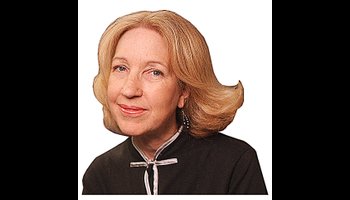By Julia Duin
The Washington Times
August 28, 2008
http://washingtontimes.com/news/2008/aug/28/secrecy-cloaks-bishops/
When I attended my first meeting of the U.S. Conference of Catholic Bishops (USCCB) in November 1986, I was very conscious of about 300 men, all dressed in black, scurrying about on very important business.
And then there was I, a religion writer for the Houston Chronicle who had no idea of what was going on.
 |
| Julia Duin |
Back then, the man who headed the press office for the bishops was Russell Shaw, always a helpful soul when I needed guidance on what was what.
His new book, "Nothing to Hide: Secrecy, Communication and the Communion in the Catholic Church," is an amazing read, considering the author was in the belly of the beast for 18 years.
His beef: Despite extravagant promises made in 2002 in the aftermath of the clergy sex-abuse scandal, the doings of the U.S. Catholic Church are as impenetrable as ever. A case in point: the twice-yearly bishops' business meetings.
First opened to the media in April 1972, the meetings stayed fairly transparent for 20 years until the early 1990s, when the bishops began spending more and more of their 3 1/2-day meetings in executive session, Mr. Shaw writes. It's gotten particularly bad in recent years.
One reason I did not fly to Orlando, Fla., in June to cover the bishops' spring meeting there is because they had set aside only one day for open meetings, plus one hour the following morning. That was it. It's hard to argue for hotel and airfare money for that.
Not that the bishops make it easy when the meetings are open. The TV cameras with Eternal Word TV Network used to pan the room when various bishops spoke up during their sessions. Helpful subtitles would appear under the name of each speaker for those of us who didn't have the visages of all 300 men memorized.
But two years ago, the subtitles were removed and the cameras were trained only on the front podium, making the discernment of who was who unbelievably difficult.
Back in the 1980s, reporters were able to walk about the main meeting room during breaks to ask the bishops questions. Now you have to submit a media request form - with the exact question you want answered - to the USCCB's media desk, which transmits the request by courier to the desired bishop.
The bishop can agree or decline to talk.
Yes, there are twice-daily news conferences with three or four selected bishops at the podium. But journalists have picked up a few tricks on ways to get quotes from the others, such as the waiting-by-the-men's-room method or the trap-them-on-the-escalator trick.
Mr. Shaw has no patience with the USCCB's continued passion for secrecy. He has talked with individual prelates who also hate the closed sessions and who feel that business meetings should be open gatherings where the laity can listen in.
"When very sensitive matters are being negotiated with the Vatican, closed discussions by the bishops may be the only responsible way for them to proceed," Mr. Shaw writes.
"On the other hand, not every topic is all that sensitive. ... The bishops sometimes discuss issues outstanding between them and Rome in open session, and the heavens do not fall."
"Taking stands on issues in public, then taking the flak that comes with it, is part of being a leader today," he adds.
Julia Duin's "Stairway to Heaven" column runs Thursdays and Sundays. Contact her at jduin@washingtontimes.com.
Any original material on these pages is copyright © BishopAccountability.org 2004. Reproduce freely with attribution.